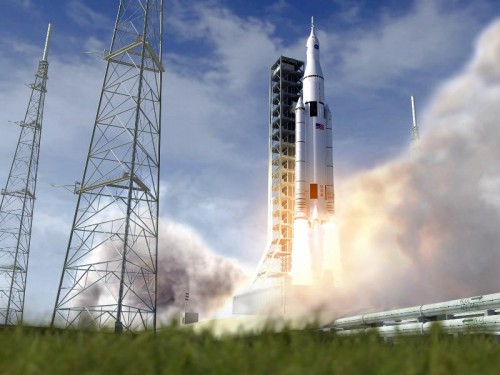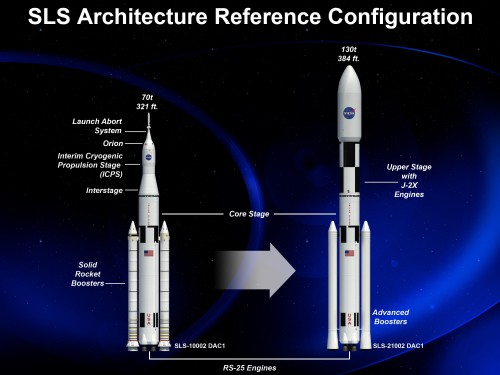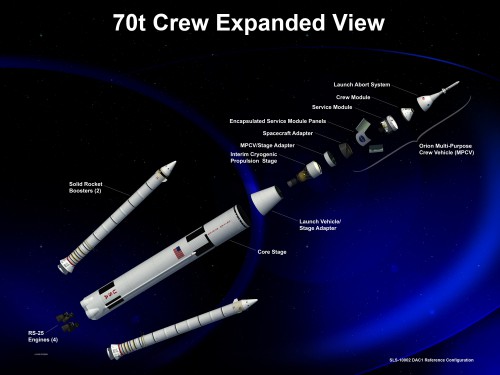
Image Credit: NASA
In its continuing progress towards returning American astronauts to space, NASA has announced a new $23.3 million contract for the design of advanced boosters for the Space Launch System (SLS). The SLS heavy-lift rocket will be used to launch the manned Orion Multi-Purpose Crew Vehicle spacecraft into space, taking astronauts back to the Moon and even beyond.
The contract has been awarded to Aerojet in Sacramento, Calif.; the company will develop engineering demonstrations and risk-reduction concepts for SLS. It is one of four companies now working on the new booster system. The other three companies are ATK Launch Systems Inc., in Brigham City, Utah; Dynetics Inc., in Huntsville, Ala.; and Northrop Grumman Corporation Aerospace Systems in Redondo Beach, Calif.
The new boosters should provide SLS with more thrust than any other current liquid or solid-fuel boosters being used by NASA. As is currently planned, the new booster system will weigh about 70 metric tons (77 tons), using a liquid oxygen and kerosene oxidizer-rich staged-combustion engine. It will consist of two five-segmented rocket boosters, similar to the ones previously used by the space shuttle. The rocket itself will weigh about 130 metric tons (143 tons), making the extra thrust necessary to get it to orbit or beyond.

As part of its testing, Aerojet will construct a full-scale, 550,000-pound thrust class main injector and thrust chamber, which will assist in measuring system performance and combustion stability. The new booster design should help to improve affordability, reliability, and performance of the SLS.
The SLS system has flexible configurations, allowing for different crew or cargo flights as needed, giving it a unique advantage over older launch systems.

The first unmanned test of the Orion spacecraft is scheduled for 2017. Orion will be capable of taking astronauts back to the Moon or even farther, such as to a nearby asteroid. Design-wise, Orion is similar to the previous Apollo spacecraft, but is significantly larger and able to accommodate larger crews. It is also technologically far more advanced than Apollo, with state-of-the-art support, propulsion, thermal protection, and avionics systems.
Commercial space companies such as SpaceX and others will focus on sending astronauts or payloads to Earth orbit, such as the International Space Station, as well as space tourism. This will allow NASA to concentrate on its primary goals involving deep space missions, including eventually even sending astronauts to Mars. In the meantime, U.S. astronauts will return to orbit for the first time since the end of the space shuttle and to the Moon for the first time since the end of Apollo. The SLS can, however, also serve as a backup for commercial flights if needed, making it even more essential for the continued human exploration of space.
More information about the Space Launch System is available here and Orion here.




2 Comments
2 Pings & Trackbacks
Pingback:United States and North American News | David Reneke | Space and Astronomy News
Pingback:NASA announces new booster contract for Space Launch System and Orion |